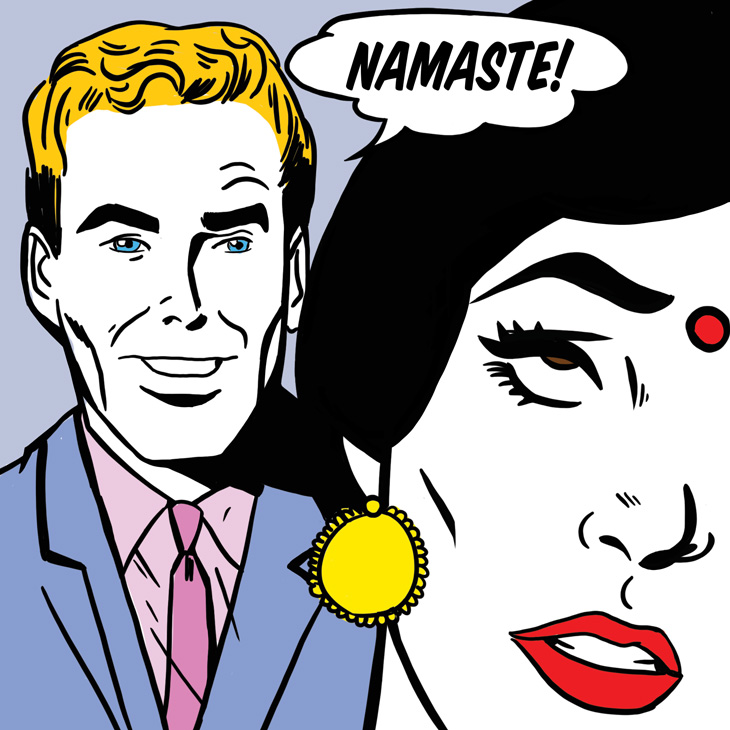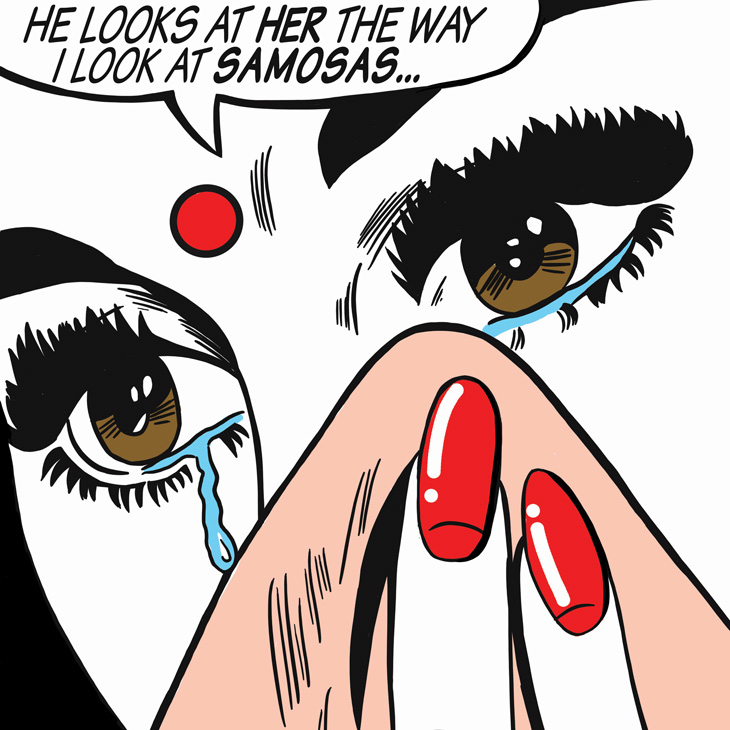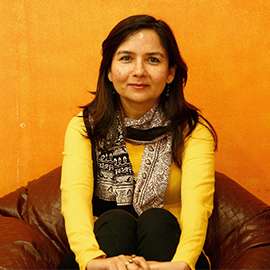Meet Hatecopy: South Asian pop art makes fun of cultural appropriation

"I'll just throw a kurta on before leaving the house. They'll never even notice" - says a young girl trying to slip out of her house in a revealing top. Two middle-aged aunties asking a 12-year-old: "Why aren't you married yet?"And a bride sighing: "He looked thinner on shaadi.com!"
It isn't easy being a desi in the West. And no one knows this better than Pakistani-Canadian pop artist Maria Qamar - who goes by the name of Hatecopy.
Qamar, who moved to Canada when she was 9, quit her advertising job to indulge in pop art to show the world through humour the horror of being desi.
Her own parents' dilemma is summed up in an artwork: "Our beti's an artist. It's all our fault!"
Qamar's parents, both chemists, didn't remotely encourage her desire to be an artist. Even now, when her work sells like hotcakes, they like to tell the world that their daughter is in the advertising business - a far more respectable profession from a 'desi's' point of view.
"I wasn't allowed to post art on my bedroom walls like the girls on TV. It was also seen as something which would have encouraged me to continue drawing and not focus on my studies. It was more of a 'tear down'," she laughs.
The Desi Dilemma
Qamar has become the voice of the South Asian immigrant - Pakistanis, Indians and Bangladeshis. Her works express their collective angst and alienation.
A lot of my work is based on the sassy and captivating Indian soap operas, mixed with changes and challenges faced by desis in the West. The beautiful thing about where I live is that all desis stick together; Bengalis, Indians, Sri Lankans, Guyanese. We share the hardships and the come-ups together, which is what makes the work relatable to all desis," says Qamar.
At 25, however, she tends to capture the pains of young girls best. At not being "fair and lovely"; at getting Rajeev, not Ryan, at "pitaji" killing "us if he found out".

The Bindi Brigade
All of Qamar's women wear a 'bindi'. She even has a standalone on how western women have taken to wearing bindis - "Is this gori wearing a bindi again?" She can't help but point out the irony of the West reclaiming the identity of the desis that they themselves were forced to relinquish to assimilate into the mainstream.
Qamar moved to Canada a year after 9/11 and was subjected to a great deal of bullying. She was called a 'Paki' which she didn't think was abusive for a long time. She remembers that bindis were called 'Paki dots' and that Westerners could not a Pakistani from an Indian or Sri Lankan.
"I don't get called a Paki now...The discrimination is more subtle as an adult; women of colour are underrepresented in the media and in galleries. Our voices are silenced on a larger scale and are often unable to reach out to our communities. To me, that's worse than any slur. I'm grateful to have the reach and the platforms to communicate these issues," says Qamar.
Surprisingly, her family back in Pakistan loves her work.
"...that's reassuring. I love that I can bring desis from different parts of the world together through art."

The Future
Qamar plans to visit India soon to work on murals and "other exciting projects". Right now she is busy working on an exhibition - "Don't cry over spilt chai".
"I'm always working on growing my skills. Currently I am working on a new body of work for my upcoming exhibit in London. I will be travelling halfway across the world with my good friend BabbuThePainter to bring another show to fans in the UK."
Qamar values all those who "come to every exhibit and continually collaborate, support and share my work", but for her, life isn't just about survival.
"Life is a little more colourful when you bring your voice and your culture into the mix," she says.
It's been less than a year since Qamar started Hatecopy. Even as she dreams of having more women of colour showcasing their work in the mainstream, she is one woman of colour that both the West and East are proud of.
First published: 25 April 2016, 11:34 IST






![BJP's Kapil Mishra recreates Shankar Mahadevan’s ‘Breathless’ song to highlight Delhi pollution [WATCH] BJP's Kapil Mishra recreates Shankar Mahadevan’s ‘Breathless’ song to highlight Delhi pollution [WATCH]](https://images.catchnews.com/upload/2022/11/03/kapil-mishra_240884_300x172.png)

![Anupam Kher shares pictures of his toned body on 67th birthday [MUST SEE] Anupam Kher shares pictures of his toned body on 67th birthday [MUST SEE]](https://images.catchnews.com/upload/2022/03/07/Anupam_kher_231145_300x172.jpg)






